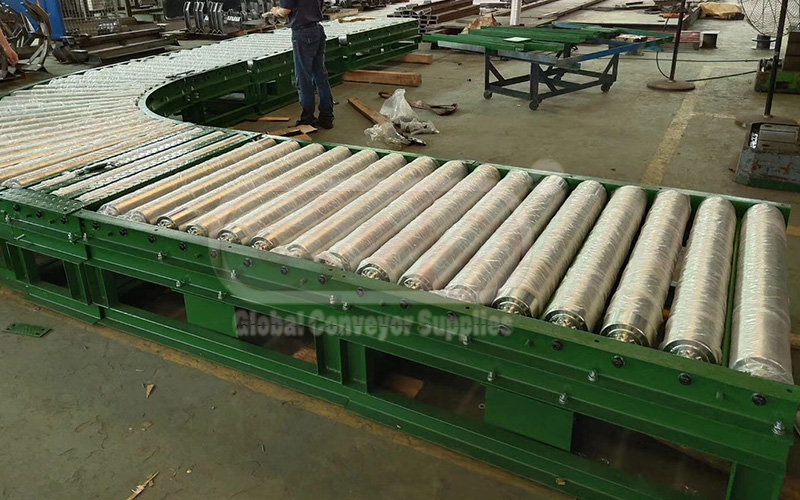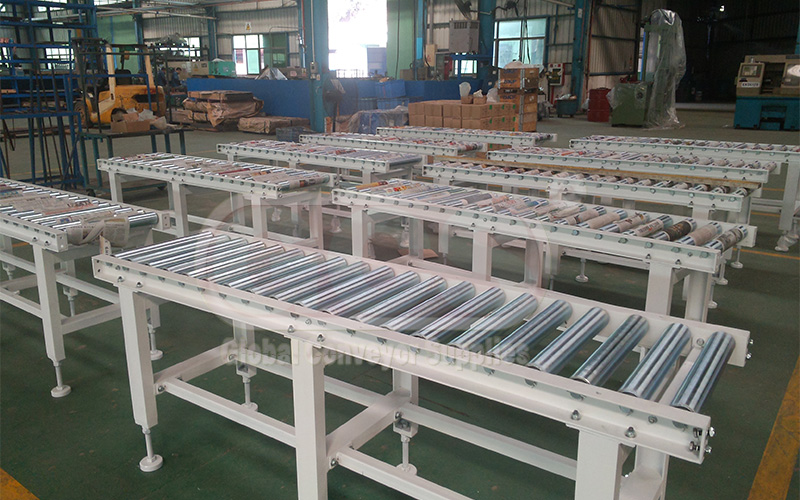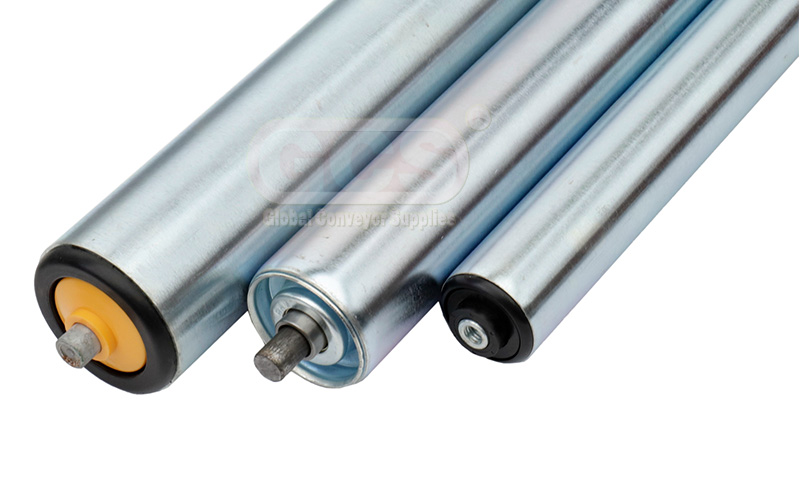As the leader of a manufacturing business, the survival of your business depends on sales. Your family, your employees, and their families are counting on you to make the decisions that will get your products sold and generate profits. This means that you need to regularly compare your current processes with industry best practices to reduce costs and time.
In this article, we want to focus your attention on conveyor rollers. With so many designs, sizes, and configurations available, here is a guide on how to make a more informed decision when selecting a roller conveyor for your application.
Conveyor load types
The first step in choosing the best conveyor roller for your application is to make a selection based on your load. For example, if your load consists of strong flat bottoms (e.g. skids, totes, cartons, strong bags, drums), you will need a conveyor with gravity rollers.
Gravity Conveyors
Gravity conveyors can be operated without the need for a power supply, making them cost-effective. Gravity rollers are available as rollers or wheels. They are used to transport products on horizontal push lines or gravity inclined lines. Rollers are used for greater load-carrying capacity and are recommended for moving packages that are uneven or have edges on the bottom. Roller conveyors are equipped with spring-loaded shafts for easy replacement. Skate wheel gravity conveyors are often used for loading-trucks, the conveyor is set on a stand and is ideal for lighter loads. Benefits include the fact that very little energy is required to turn the wheels, making wheeled gravity conveyors ideal for those wishing to control the speed of the product. As each wheel turns independently, wheeled conveyors are a great addition to the curved section of a warehouse.
Power conveyors
The main difference between powered conveyors and gravity conveyors is the use of motors to move the product over greater distances and the possibility of using either rollers or belts. Powered roller conveyors are best suited to regular-sized, heavier loads as the rollers create constant contact between your product and the line. Roller conveyors can be equipped with steel pins to create product stopping points for quality checks. Steer wheels can also be added to powered roller conveyors to guide the flow of material. Belt-powered conveyors are also handy if you have to move products with odd shapes or uneven surfaces. Belt-powered conveyors are used to carrying loads over long distances and can transport products to different heights.
Whichever roller conveyor type you choose, some general specifications must be determined before you can purchase the right type of conveyor for the project. Below are some typical conveyor specifications you will encounter when looking for the right conveyor system.
Material of rollers and bays.
The most necessary specification will be the material used to construct the brackets and rollers. The pallets are usually made of aluminum or steel, depending on how much load the conveyor system will carry, i.e. the load rating. The material of the rollers is much more varied, as they are in direct contact with your product and will affect its behavior when moving. Some rollers are coated with plastic or rubber to increase friction, while others are simply aluminum or steel rollers. Special materials also prevent corrosion and extend the life of the roller. Choose a roller that will keep your product in a stable transport condition and will not negatively affect the integrity of your product, and a carrier that will carry the weight of the material being conveyed as well as the weight of the roller.
Roller size and orientation.
Firstly, we need to determine how large the material on the conveyor is and then determine the layout of the conveyor so that it does not interfere with/obstruct the movement of the object. This means sizing the individual rollers, which is done by considering the load and load conditions. For example, heavier, high-impact loads will require larger diameter rollers, while slow, low impact loads will suit smaller diameter rollers. Next, the length of the load contacting the conveyor surface is found to calculate the spacing of each roller and the spacing is determined to ensure that at least three rollers are always in contact with that surface.
Type of load and accumulation.
The type of load and accumulation depends on the product to be conveyed. How heavy is the product? Is it fragile? Will it come into contact with other items on the line? The answers to these questions will help us further determine what roller conveyor is suitable; gravity roller conveyors are best suited for objects with a flat bottom and medium or low weight, such as boxes, bags, and totes, but they are not suitable for overly delicate and bulky geometries, such as electronics and manufacturing parts.
Distance and curvature.
Determining the span and curvature of the conveyor will also help to narrow down the choice. For example, a flat belt roller conveyor cannot be used if a curve exists, so if you need a curve, you should not purchase this design. Similarly, if you are traversing hundreds of feet, consider a more efficient design, such as a powered roller conveyor, to make the most efficient use of energy.
Ready to get started?
If reducing manufacturing costs and time with better conveyor rollers is important to you, please contact us. During our conversation, we can discuss feasibility, potential savings, and whether we can provide the most suitable conveyor roller for your application.
GCS reserves the right to change dimensions and critical data at any time without any notice. Customers must ensure that they receive certified drawings from GCS prior to finalizing design details.
Post time: May-31-2022



